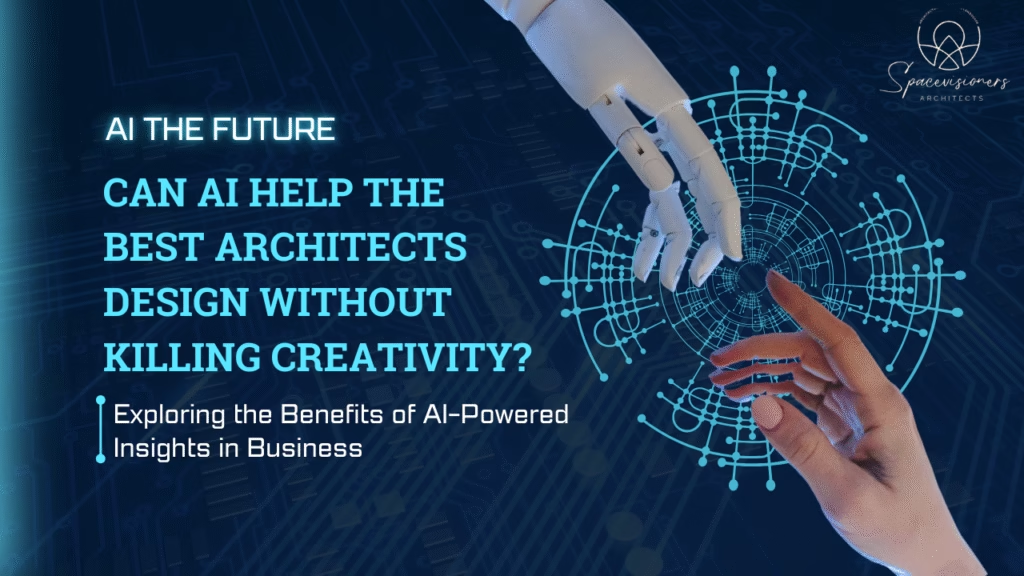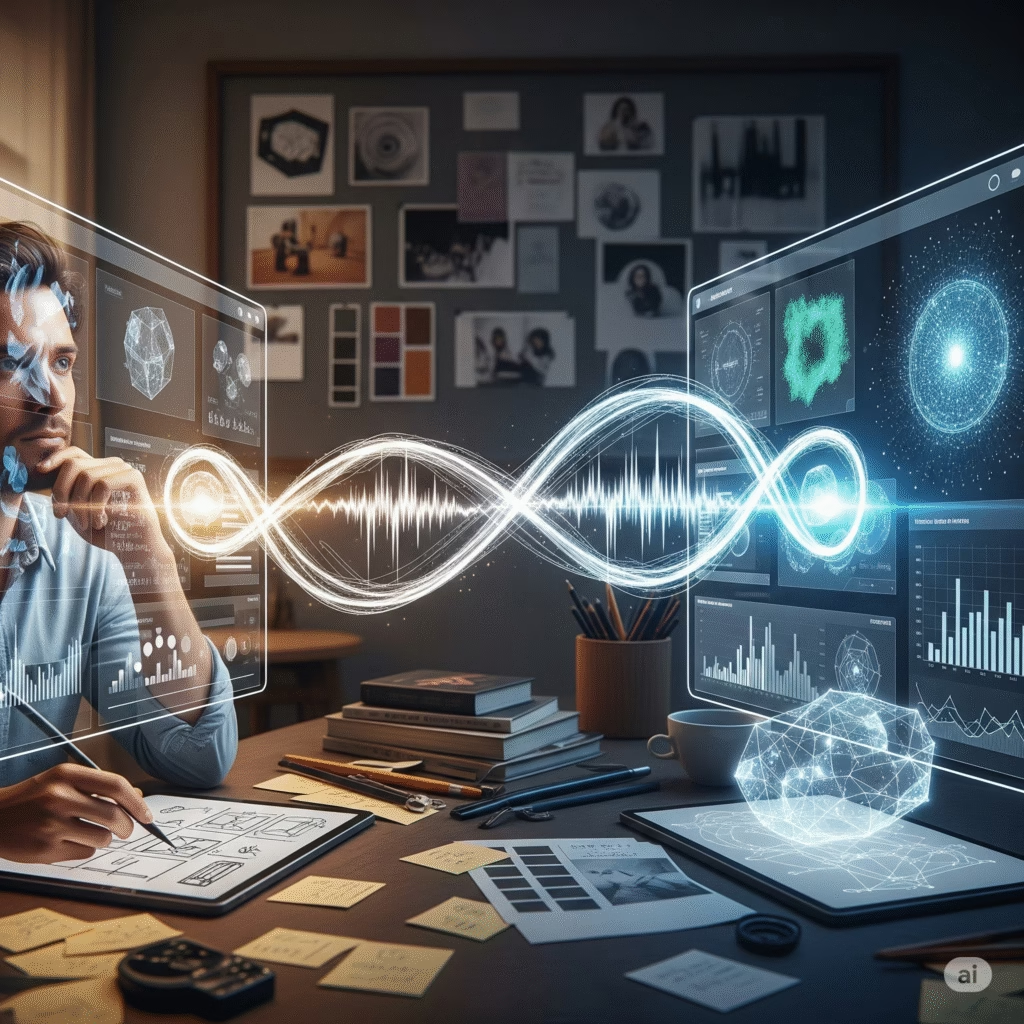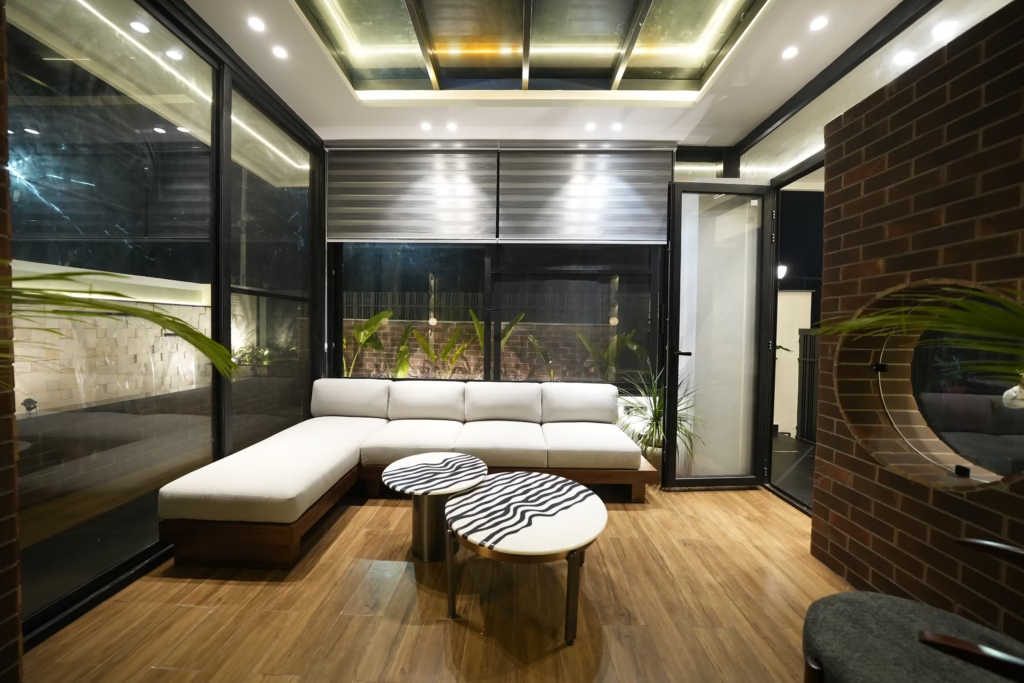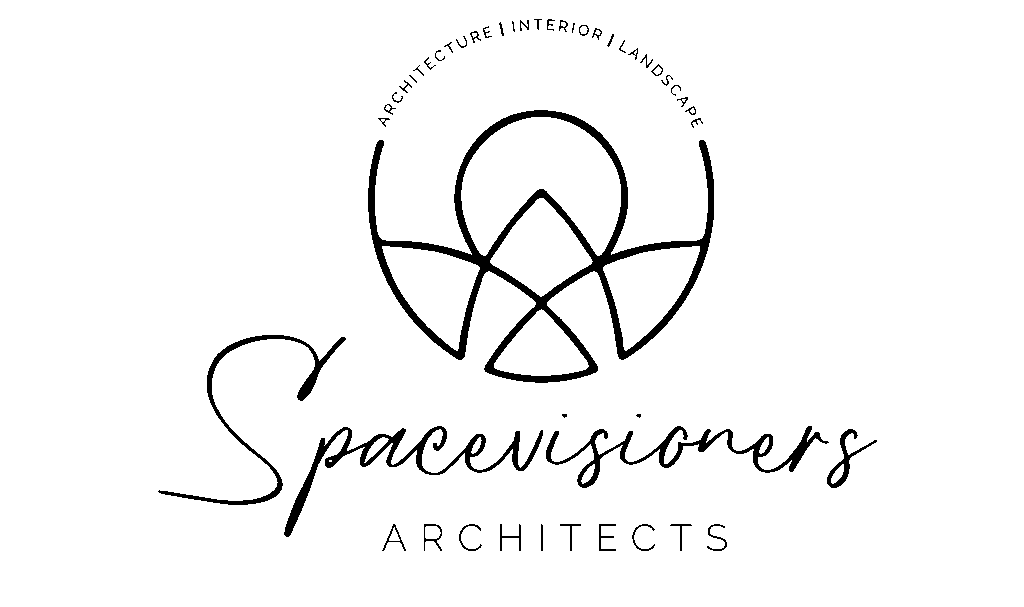Introduction: Can AI Transform Design with the Best Architects?
Architecture has always balanced between art and science. A doodle becomes a skyline, a drawing becomes a home. Today, with the arrival of Artificial Intelligence, the debate has shifted: Can AI Transform Design with the Best Architects?

Around the world, architects are adopting tools that automate floor plans, generate stunning 3D renders, and even predict building performance. Yet, many fear that relying too much on algorithms could lead to cookie-cutter buildings and a loss of the architect’s unique voice.
Interestingly, even the best architects in Dehradun, a city where modern design is intersecting with traditional Himalayan influences, are exploring AI to speed up design processes while ensuring that the creative soul of architecture remains untouched. Among them, Spacevisioners Architects have been at the forefront of blending AI-driven efficiency with culturally rooted creativity.
Interestingly, even the best architects in Dehradun, a city where modern design is intersecting with traditional Himalayan influences, are exploring AI to speed up design processes while ensuring that the creative soul of architecture remains untouched.
So, let’s unpack how AI is reshaping design, where creativity fits into this equation, and what this means for the future of architecture.

How AI Is Already Speeding Up Design
The architectural process involves hundreds of hours of drafting, modeling, and testing. This is being altered by AI in three significant ways::
Generative Design: Platforms like Autodesk Forma or Finch3D let architects input site constraints (climate, zoning, sunlight angles) and instantly receive optimized design options. Things that used to take weeks now take minutes.
AI Image Generation: Tools like Midjourney and Stable Diffusion allow architects to explore conceptual sketches in multiple styles — from futuristic glass towers to earthy, vernacular cottages — without redrawing every variation.
Automation of Repetitive Tasks: AI can handle technical chores like material schedules, cost estimation, or clash detection, giving architects more time to focus on design thinking.
This is where speed matters: architects can test more ideas in less time, which can lead to more creative outcomes rather than fewer.
The Fear: Is Creativity at Risk?
Even in Dehradun, architects are proving this point. While AI might suggest a sleek, glass façade for energy efficiency, Spacevisioners Architects and other leading firms adapt the design by adding local stonework and sloped roofs to respect Himalayan weather and traditions.
Still, the question lingers — doesn’t automation risk turning architecture into a formula?
Critics argue that if everyone uses the same AI tools, buildings might start looking eerily similar. Think of it like using the same Instagram filter — eventually, uniqueness fades.
AI is only as creative as the person guiding it. If an architect feeds an AI vague prompts, they’ll get generic results. If they use detailed, context-rich inputs (climate, culture, materials), the outcome can be highly innovative.
Even in Dehradun, architects are proving this point. While AI might suggest a sleek, glass façade for energy efficiency, the best architects in Dehradun adapt the design by adding local stonework and sloped roofs to respect Himalayan weather and traditions.
So the balance isn’t about AI replacing creativity. It’s about architects learning how to steer AI.
Real Examples of AI Empowering Design (Not Replacing It)
Zaha Hadid Architects experimented with AI to explore complex geometries impossible to model manually. Yet, the final design was still guided by human taste and cultural context.
AI simulations were employed by BIG (Bjarke Ingels Group) to maximize energy efficiency in urban developments. The creativity lay in deciding which of the AI outputs aligned with their vision.
In India, experimental projects in hilly regions have shown how AI’s climate-analysis tools can predict wind flow and sunlight, helping homes stay warm in winter and cool in summer.
The pattern is clear: AI provides data, speed, and variations, but the final aesthetic and cultural narrative always comes from humans.
Where Human Creativity Still Wins
No matter how advanced, AI struggles with:
Cultural Sensitivity: AI doesn’t understand what makes Dehradun’s architecture unique — the blend of colonial heritage, Himalayan context, and modern aspirations.
Emotional Resonance: A building isn’t just walls; it’s a feeling. Creativity is about crafting spaces that evoke comfort, awe, or intimacy — something algorithms can’t measure.
Breaking Rules: AI learns patterns from existing data. True creativity often means breaking those patterns.
That’s why even as AI improves design, human creativity stays central.
The Ethical Question: Where to Draw the Line?
There’s also an ethical layer. Should clients be told when AI played a major role in their home’s design? If an AI suggests the cheapest material but it has environmental downsides, who takes responsibility?
The best architects in Dehradun, including Spacevisioners Architects, approach AI as an assistant, not a replacement. They still guide material choices, cultural narratives, and aesthetics while letting AI handle efficiency.
This balanced approach ensures that architecture remains both innovative and responsible.

The Future: Architects as Curators of Possibility
Here’s what’s likely in the next decade:
Architects won’t “draw” in the traditional sense as much. They’ll curate options from AI outputs, refine them, and bring a human lens.
AI will democratize design — even non-architects may play with floor-plan generators — but professional architects will remain crucial for turning ideas into safe, livable, beautiful realities.
Creativity won’t die. Instead, it will shift from “how do I draw this?” to “how do I decide among hundreds of AI-generated options?”
It’s not the death of creativity. It’s an evolution.
Conclusion: The Answer to the Big Question
So, can AI improve design without killing creativity? Absolutely — if architects use it wisely.
AI speeds up processes, reveals new possibilities, and handles repetitive tasks. But the spark of originality, cultural meaning, and emotional depth — those remain human-only domains.
And as Dehradun continues to grow as a hub for modern yet context-aware architecture, it’s clear that even the best architects in Dehradun — like Spacevisioners Architects — are proving that AI and creativity aren’t enemies. They’re partners.
In the end, AI won’t kill creativity. It will challenge architects to redefine it. Explore more about how the projects have been done via Instagram.
Frequently Asked Questions
Q1. Can AI replace architects completely?
Ans. No, AI cannot replace architects. It speeds up tasks like floor plans and simulations, but human creativity, cultural understanding, and emotional design remain essential. Firms like Spacevisioners architects use AI as a supportive tool, not a replacement.
Q2. How do architects use AI in real projects?
Ans. Architects use AI for generative design, energy simulations, and quick 3D visualizations. For example, Spacevisioners architects leverage AI tools to test multiple design options efficiently while ensuring the final outcome reflects local culture and client needs.
Q3. What is responsive architecture in simple terms?
Ans. Responsive architecture means buildings that adapt to climate or user needs, like walls that adjust for sunlight or windows that react to air flow. Architects integrate smart systems to improve comfort and sustainability in modern homes.
Q4. Why is human creativity still important in AI-driven design?
Ans. AI follows patterns from data, but only human architects bring emotion, storytelling, and cultural sensitivity. Spacevisioners architects combine AI efficiency with human imagination to create unique designs that connect with people.
Q5. Are the best architects in Dehradun using AI today?
Ans. Yes, many Architects, counted among the best architects in Dehradun, are experimenting with AI. They use it for design optimization while ensuring projects respect local traditions, climate, and modern client expectations.
